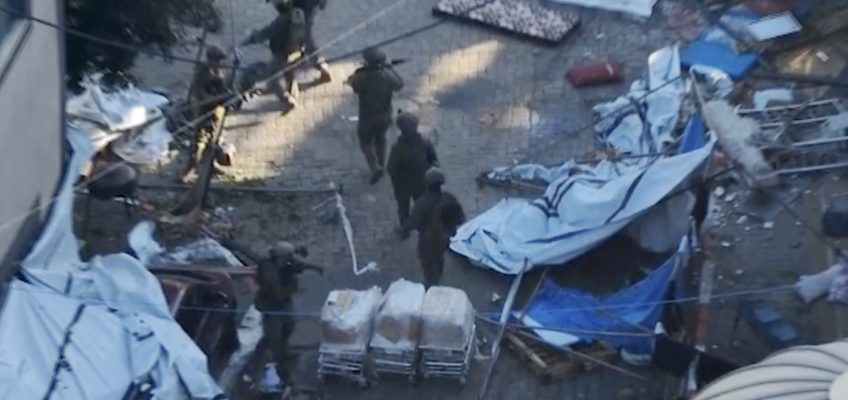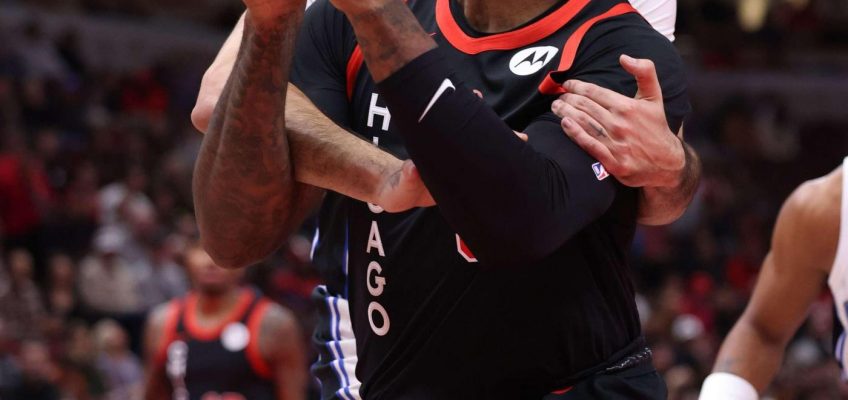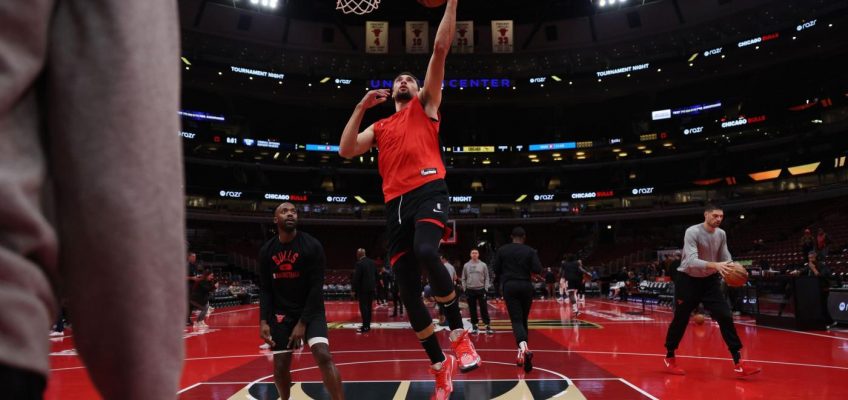KHAN YOUNIS, Gaza Strip — Patients, staff and displaced people left Gaza’s largest hospital Saturday, health officials said, leaving behind only a skeleton crew to care for those too sick to move and Israeli forces in control of the facility.
The exodus from Shifa Hospital in Gaza City came the same day internet and phone service was restored to the Gaza Strip, ending a telecommunications blackout that forced the United Nations to shut down critical humanitarian aid deliveries because it was unable to coordinate its convoys.
Israel continued to expand its offensive in Gaza City, with the military warning in a social media post in Arabic that residents of two neighborhoods in the east and north and the urban refugee camp of Jabaliya must evacuate for their safety.
It said military activities would be paused briefly to allow them to leave. Earlier in the week, the Israeli defense minister had said troops had completed operations in the west of Gaza City.
Attacks also continued in the south of the Gaza Strip, with an Israeli airstrike hitting a residential building on the outskirts of the town of Khan Younis, killing at least 26 Palestinians, according to a doctor at the hospital where the bodies were taken.
Israel’s military has been searching Shifa Hospital for traces of a Hamas command center that it alleges was located under the building — a claim Hamas and the hospital staff deny — and urging the several thousand people still there to leave.
On Saturday, the military said it had been asked by the hospital’s director to help those who would like to leave do so by a secure route.
The military said it did not order any evacuation, and that medical personnel were being allowed to remain in the hospital to support patients who cannot be moved.
But Medhat Abbas, a spokesman for the Health Ministry in Hamas-controlled Gaza, said the military had ordered the facility cleared, giving the hospital an hour to get people out.
After it appeared the evacuation was mostly complete, Dr. Ahmed Mokhallalati, a Shifa physician, said on social media that there were some 120 patients remaining who were unable to leave, including some in intensive care and premature babies, and that he and five other doctors were staying behind to care for them.
It was not immediately clear where those who left the hospital had gone, with 25 of Gaza’s hospitals non-functional due to lack of fuel, damage and other problems and the other 11 only partially operational, according to the World Health Operation.
Israel has said hospitals in northern Gaza were a key target of its ground offensive aimed at crushing Hamas, claiming they were used as militant command centers and weapons depots, which both Hamas and medical staff deny.
Israeli troops have encircled or entered several hospitals, while others stopped functioning because of dwindling supplies and loss of electricity.
The war, now in its seventh week, was triggered by Hamas’ Oct. 7 attack in southern Israel, in which militants killed about 1,200 people, mostly civilians, and abducted some 240 men, women and children. Fifty-two soldiers have been killed since the Israeli offensive began.
More than 11,400 Palestinians have been killed in the war, two-thirds of them women and minors, according to Palestinian health authorities. Another 2,700 have been reported missing, believed buried under rubble. The count does not differentiate between civilians and combatants, and Israel says it has killed thousands of militants.
The U.N. has warned that Gaza’s 2.3 million people are running critically short of food and water, but it was not immediately clear when the agency for Palestinian refugees, known as UNRWA, would be able to resume the delivery of aid that was put on hold Friday.
The Palestinian telecommunications provider said it was able to restart its generators after UNRWA donated fuel. The end of the communications blackout meant a return to news and messages from journalists and activists in the besieged enclave on social media platforms as service began to return late Friday night.
AID DRIES UP
Gaza’s main power plant shut down early in the war and Israel has cut off the electricity supply. That makes fuel necessary to power the generators needed to run not only the telecommunications network, but water treatment plants, sanitation facilities hospitals and other critical infrastructure.
Israel said it would now allow in 2,641 gallons of fuel daily for communications service to continue, according to the U.S. State Department.
Additionally, COGAT, the Israeli military body responsible for Palestinian affairs, said it would allow 15,850 gallons a day for the U.N.
Still, that is only 37% of the fuel needed by UNRWA to support its humanitarian operations, including food distribution and the operation of generators at hospitals and water and sanitation facilities, the U.N. said.
Gaza has received only 10% of its required food supplies each day in shipments from Egypt, according to the U.N., and the water system shutdown has left most of the population drinking contaminated water, causing an outbreak of disease.
Dehydration and malnutrition are growing, with nearly all residents in need of food, according to the U.N.’s World Food Program.
MARCH FOR HOSTAGES
Thousands of marchers — including families of more than 50 hostages — snaked along a main Israeli highway Saturday on their last leg of a five-day walk from Tel Aviv to Jerusalem. Calling on the government to do more to rescue some 240 hostages held by Hamas, they planned to rally outside Prime Minister Benjamin Netanyahu’s house later in the day.
A spokesperson for the families, Liat Bell Sommer, said two members of Israel’s wartime Cabinet, Benny Gantz and Gadi Eisenkot, had agreed to meet with them. She added it was not yet clear whether Netanyahu would as well.
Many are furious with the government for refusing to tell them more about what is being done to rescue the hostages. They have urged the Cabinet to consider a cease-fire or prisoner swap in return for the hostages, both proposals which the government has thus far opposed.
Hamas offered to exchange all hostages for some 6,000 Palestinians in Israeli jails, which the Cabinet rejected.
CONTINUED STRIKES
Israel has signaled plans to expand its offensive south while continuing operations in the north.
In Khan Younis, the attack early Saturday hit Hamad City, a middle-class housing development built in recent years with funding from Qatar. In addition to the 26 people killed, another 20 were wounded, said Dr. Nehad Taeima at Nasser Hospital.
Israel rarely comments on individual strikes, saying only that it is targeting Hamas and trying to avoid harm to civilians. In many of the Israeli strikes, women and children have been among the dead.
Most of Gaza’s population is now sheltering in the south, including hundreds of thousands of people who heeded Israel’s calls to evacuate Gaza City and the north to get out of the way of its ground offensive.
Elsewhere, the Israeli military said its aircraft struck what it described as a hideout for militants in the urban refugee camp of Balata in the occupied West Bank. The Palestinian Red Crescent ambulance service said five Palestinians were killed in the strike.
The military alleged that those targeted had planned to carry out imminent attacks on Israeli civilians and military targets.
The deaths raised to 210 the number of Palestinians killed in West Bank violence since the Gaza war erupted on Oct. 7, making it the deadliest period in the territory since the second Palestinian uprising in the early 2000s.




